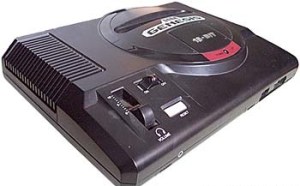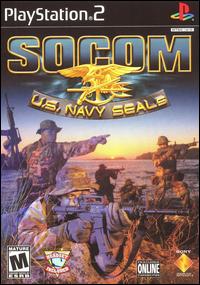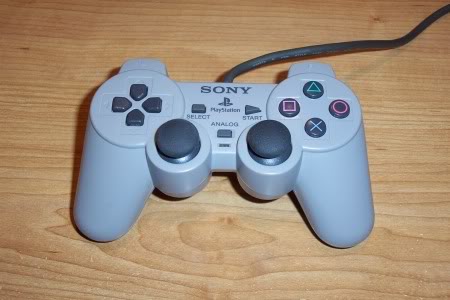In the series of interviews I did with Playstation insiders to celebrate the brand’s 15th anniversary, Scott Rohde’s the odd man out. He’s the only non-designer I spoke to and the only person to have worked at a hardware company other than Sony. But the Senior Vice-President of Worldwide Studios does have a long history of game production behind him, making him a very developer-friendly executive.
During my talk with him, Rohde discussed his early career with Sega, the way sports video games landscape has changed and how the creative culture at Sony treats game development. Read on for the insights of someone who’se worked his way up Sony’s corporate food chain.
I’ve spoken with several developers and we are kind of trying to do this oral history of the Playstation brand through their eyes. So, where were you before you came to Sony?
OK, so I started my career with Sega back in 1989, testing games. I’ve always loved games my whole life. So when someone told me out of school that I could actually earn money by testing games, it was kind of a no brainer. I stayed at Sega for many years through about 1997. Then did some work with a couple of other partners. Helped to started a dev studio in San Francisco called Page 44 Studios, and through that relationship, met Shu Yoshida, who is the president of Worldwide Studios. He recruited me to come to San Diego, run the San Diego development studio, and then eventually, I’ve moved up to my current role now.
That’s a long, long history in the industry. When you were a tester at Sega, that was during which console cycle?
 At Sega? OK, so when I first started there, believe it or not, they were still working with Sega Master System and the Genesis was just coming into being. Every time you see new technology in the industry, you get pretty excited, so the Genesis was a pretty big deal. The Game Gear came along sometime during my cycle, and I made my exit during the Saturn years.
At Sega? OK, so when I first started there, believe it or not, they were still working with Sega Master System and the Genesis was just coming into being. Every time you see new technology in the industry, you get pretty excited, so the Genesis was a pretty big deal. The Game Gear came along sometime during my cycle, and I made my exit during the Saturn years.
So you were pre-Dreamcast.
Yes I was. I was there when the Dreamcast was being conceptualized.
And now it doesn’t even exist anymore. You are in a position of being able to mourn Sega’s time as a hardware manufacturer. What do you think was different about the way Sony executed their launch that made the Playstation such a strong and sexy machine from the get-go?
It’s a great question. With my history at Sega, I have a pretty interesting perspective on that. When I was at Sega, the rumors started floating around that Sony was going to try to get into the video game console business. I remember specifically sitting with groups of grizzly old veterans saying, “Oh, there’s no way! Sony’s not going to be able to pull this off. Not just anyone can pull this off.”
And when they did, when Sony came into the market with the Playstation, it blew everybody away. It blew everybody away. And I think the key to that was the delivery medium. So, delivery on CD just opened up so many new windows. It gave people the ability to put a lot of content on a disc, to stream from a disc, and not be limited to what you could cram onto a cartridge, and that was a huge, huge change in home console gaming.
David Jaffe was at Sony’s publishing arm at the time, and he was like, yeah, we went from supporting other machines, to basically creating content for this new machine. And everybody I’ve talked to has mentioned the delivery medium. The shift from cartridge to disc.
Oh yeah, that was huge.
Hindsight is 20/20 now, but is there anyway you can talk about what the risk/reward factor was at that time?
I’m not sure there was a whole lot of risk other than they were going up against two giants at the time which was Sega and Nintendo. That was the biggest risk factor. But I think obviously Sony knew they had something special back in the Ken Kutaragi days. He knew he had something special because you could put so much more content on the disc. I didn’t even mention the controller, which in itself was a revolution as well. A lot of people talk about it just being, at a time back when Playstation 1 was launched, that it was just a revision of current controllers, but the fact that you had two analog sticks, that was a big deal. A big deal, yeah.
And I think that really also opened up the whole idea of “move with the left stick, control the camera with the right stick.” It just has become such a standard in gaming now and it’s been that way for a long time.
Was there any particular title from the launch library for PS1 that you felt captured the hearts and minds of the audience that Sony was going for?
So, again, I’m coming at this from a totally different perspective. Back at that time, I was almost completely focused on sports. When I left Sega, I was running their Sega Sports Group. When Sony came out with GameDay, it was really the first, truly 3D football game, one that really changed the way that all gamers looked at sports. It went from, oh, just a 2D representation of guys running east and west on your TV screen, to wow, I can change it to any camera angle I want and I really can feel those hits, I can see the holes opening in the line. It really opened up all sorts of new worlds for 3D sports gaming, and I think that was a key, key title back in the day.
Interesting. At what point did you get the sense that Sony stopped worrying about the PS1 and knew that they were in the game for a long haul?
I wasn’t with the company at the time, but I think that happened pretty early on in the cycle. I think once they established a few of those early hits like the Crash Bandicoots of the world.
I mean, there’s all sorts of games like that where people realized “OK, this is a truly 3D game, these guys are here to stay.” From my perspective at the time, on the outside, Sony seemed to realize that they can do whatever we want in this space. I honestly don’t think they were worried about, could they exist in this space anymore? I think at that point they started thinking about, we’re pretty sure we can take this space over. And that’s exactly what happened with the Playstation 2.
So you became a developer during the PS1 days, correct?
During the PS1 days, that’s when Sega was transitioning. It was an interesting time for Sega. So they were trying to figure out if they were a hardware company or a software company. And that’s about the time that I left.
I became a developer, like you said. So, during that time, I worked on several projects with companies like EA. Did some Playstation 1 sports games, some Playstation 2 sports games, and that transitioned into some first-party work with Sony doing some first-party sports games, which eventually led me to San Diego.
So can you speak to the internal response at Sega to Sony’s efforts? Like, were they scared, were they nervous? Did they view them as an upstart?
I left before Sony really established their dominance in the space. Just like I said earlier, there was not a lot of fear. It was, “Uh, Sony really thinks they can come in there? We’ve done this for years. We’re the experts.” That’s really what it felt like. But man, Sony established their stronghold pretty quickly. And by the time PS2 came around, they were such a dominant player over even Nintendo at the time. I think it really did take everyone by surprise.
Then, as we’re going into PS2 launch, Sony’s well-established. There was more of an actual horse race during the N64, PS1, PS2 era, because they all kind of coexisted for a while. What was your reaction to the PS2 launch?
There were only a couple of titles there at launch, but you knew the machine was special. So, I think that during that time frame in the couple of years post-launch, it was a really great time to be a developer. I mean, there was a great machine out there that could do things that no other machine could ever do before. And for me personally, as a gamer and a big fan of sports games, it was a great sports gaming machine. Right?
Right.
I think a lot of people had a lot of fun playing sports, myself included. I put tons of time into games like Madden back in the day. We put a lot of time into those games. I think that you also just started to see scratching the surface of online shooter games as well with the introduction of the SOCOM franchise.
 I think that was something that, when the online adapter came out for the Playstation 2, and people started really investing heavy amounts of time playing online shooters like SOCOM, that was really revolutionary for its time when SOCOM went online. I had some friends that went so head over heels into SOCOM addiction. I mean they really spent hours upon hours playing that game because they hadn’t experienced anything like it before on a home console. That was pretty revolutionary stuff.
I think that was something that, when the online adapter came out for the Playstation 2, and people started really investing heavy amounts of time playing online shooters like SOCOM, that was really revolutionary for its time when SOCOM went online. I had some friends that went so head over heels into SOCOM addiction. I mean they really spent hours upon hours playing that game because they hadn’t experienced anything like it before on a home console. That was pretty revolutionary stuff.
I have to say with regard to the online adapter and Sony’s strategy around the PS2, a lot of people felt like they got in the game late with regard to online play. It’s all water under the bridge at this point, but do you feel like that hurt them in any way?
I don’t think so. When you look at the overall success of the PS2, I think that machine had a pretty secure spot at the peak of the gaming industry for a long time, and I think people welcomed that adapter with open arms. When the machine came out, the timing just wasn’t right for that adapter to be there. This is one thing that Sony has always been very good at, is making sure that their machines can adapt to the needs of the consumers over the whole life cycle of the platform.
So Playstation 2 has been out there for about 10 years, and it was been able to evolve during that period, and you’re seeing the same thing happen with the PS3, with the launch of Move. These are big additions to the platform. It’s something that you know, buy a Sony machine, and, they are going to follow the needs of the consumers. That’s something that even before I worked here, I appreciated as a gamer.


